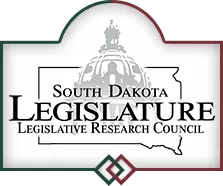|
State of South Dakota
|
|
NINETY-FOURTH SESSION LEGISLATIVE ASSEMBLY, 2019 |
| 373B0481 | SENATE JUDICIARY ENGROSSED NO. SCR 7 - 2/6/2019 |
|
Introduced by: Senators Kennedy, Bolin, Foster, Heinert, Langer, Nesiba, Otten (Ernie),
Soholt, Solano, and Wismer and Representatives Sullivan, Bordeaux,
Borglum, Cwach, Duba, Healy, Lesmeister, McCleerey, Otten (Herman),
Pourier, Reed, Ring, Schoenfish, Smith (Jamie), and St John
|
A CONCURRENT RESOLUTION, Directing the Executive Board to create a fifteen-member
task force to study and make legislative proposals regarding alternatives to imprisonment
for those convicted of the crime of ingestion of controlled substances.
WHEREAS, a conviction under § 22-42-5.1 for ingestion of a controlled substance carries
the penalty of a Class 6 felony; and
WHEREAS, South Dakota is the only state that imposes a felony for ingestion of a
controlled substance; and
WHEREAS, twenty-seven percent of the male population and thirty-six percent of the
female population of inmates in the state, with a total population of three hundred sixty-six
inmates, who are serving prison terms for ingestion of a controlled substance under § 22-42-5.1;
and
WHEREAS, reducing the penalty for ingestion of a controlled substance under § 22-42-5.1
from a felony to a misdemeanor would save the state an estimated fifty million dollars in
department of corrections expenses over ten years, according to a Legislative Research Council's
prison and jail cost estimate in 2018; and
WHEREAS, prevention and treatment alternatives to imprisonment, including Drug Courts,
Hope Probation, and mental health or substance abuse treatment services, reduce recidivism and
provide better opportunity for offenders to stay with their family, in their community, and to
remain employed:
NOW, THEREFORE, BE IT RESOLVED, by the Senate of the Ninety-Fourth Legislature
of the State of South Dakota, the House of Representatives concurring therein, that the
Executive Board of the Legislative Research Council shall create a task force to be comprised
of fifteen members, with any vacancy on the task force to be filled in the same manner as the
original appointment, and including:
(1) Three members of the Senate, two of whom to be members of the Republican party
and one of whom to be a member of the Democrat party;
(2) Three members of the House of Representatives, two of whom to be members of the
Republican party and one of whom to be a member of the Democrat party;
(3) The secretary of the Department of Social Services;
(4) The secretary of the Department of Corrections;
(5) The attorney general;
(6) Two members to be appointed by the Governor who are members of the law
enforcement community, including a sheriff and a state's attorney;
(7) Two members from the Unified Judicial System; and
(8) Two members who are representatives of the South Dakota Association of County
Commissioners, including a county commissioner;
BE IT FURTHER RESOLVED, the task force shall study and evaluate the crime of
unauthorized ingestion of controlled drugs or substances under § 22-42-5.1, including the
number of arrests, convictions, and rates of recidivism since the law was enacted in 2013;
BE IT FURTHER RESOLVED, the task force shall study and evaluate alternatives to
imprisonment for any person charged and convicted under § 22-42-5.1 more adequately to assist
the person with substance abuse issues;
BE IT FURTHER RESOLVED, the task force shall study and evaluate possible funding
alternatives as well as the financial ramifications through the reclassification of the penalty
under § 22-42-5.1 from a felony to a misdemeanor on the state, the counties of the state, law
enforcement, substance abuse treatment facilities, and any other interested person that may be
affected by the reclassification of the penalty;
BE IT FURTHER RESOLVED, the task force shall report to the Legislature and the
Governor before the beginning of the Ninety-Fifth Legislative Session, including any draft
legislation or policy recommendations;
BE IT FURTHER RESOLVED, the task force shall be staffed by the Legislative Research
Council and funded not in excess of twenty-one thousand dollars.
